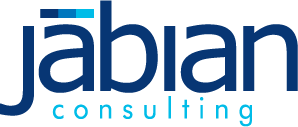The value of an engaged workforce is indisputable, with countless examples of companies with positive, aligned cultures far outperforming those without. Employee engagement has emerged as a requirement for organizations aiming to create a productive, innovative, and loyal workforce. However, investments in strategies and tactics designed to improve engagement are usually the first ones on the chopping block when budget decisions get tight, largely because executives don’t fully understand the value and ROI of such programs. Here we explore five examples of employee engagement trends that have consistently demonstrated positive ROI, backed by empirical evidence and industry research.
1. Personalized Employee Experience
Tailoring the employee experience to meet individual needs and preferences has shown to significantly boost engagement. A Gallup report reveals that companies with highly engaged workforces are 21% more profitable than those with poor engagement. Personalized experiences can range from customized learning and development programs to flexible working options that accommodate different life stages and personal commitments. For instance, Gartner’s research indicates that organizations offering a range of benefits tailored to various employee needs can increase employee performance by as much as 20%.
2. Investment in Employee Wellness Programs
Wellness programs go beyond basic health benefits. They include mental health support, stress management workshops, and access to fitness facilities, as examples. A study by the International Foundation of Employee Benefit Plans found that 63% of organizations noticed an increase in productivity and 66% reported increased employee satisfaction after implementing wellness programs. Moreover, the ROI can be substantial – the Harvard Business Review reported that for every dollar invested in wellness programs, medical costs fall by about $3.27, and absenteeism costs fall by about $2.73.
3. Utilization of Advanced Analytics and AI
Advanced analytics and artificial intelligence (AI) are powerful tools in understanding and enhancing employee engagement. They can predict turnover, identify engagement drivers, and tailor communication strategies. Companies employing data analytics for HR purposes have seen a profit margin 56% higher than those that do not. Furthermore, an IBM study found that AI can help unlock up to $300 billion in value in the HR field alone, primarily through boosting employee productivity.
4. Fostering a Culture of Recognition
Recognition has consistently been a high-impact strategy for employee engagement. Research has shown that organizations with a recognition-rich culture have a 31% lower voluntary turnover rate. Employee recognition platforms have made it easier to celebrate achievements in real-time, contributing to a positive work culture and increased employee motivation. These platforms not only streamline the process of recognition but also provide valuable data to further refine employee engagement strategies.
5. Continuous Learning and Development Opportunities
The link between learning opportunities and employee engagement is well-established. LinkedIn’s 2019 Workforce Learning Report stated that 94% of employees would stay at a company longer if it invested in their learning and development. By aligning individual growth with organizational goals, companies can cultivate a more engaged and competent workforce. Moreover, a study by the National Center on the Educational Quality of the Workforce (EQW) found that a 10% increase in workforce education level led to an 8.6% gain in total productivity.
These five trends represent more than just passing fads; they are strategic imperatives that can drive both employee satisfaction and business outcomes. Investing in a personalized employee experience, comprehensive wellness programs, advanced analytics, a culture of recognition, and continuous learning opportunities are proven approaches to enhancing engagement. Organizations that implement these strategies effectively can not only expect a positive ROI, but also position themselves as employers of choice in an increasingly competitive talent market. By doing so, they pave the way for sustainable success and a resilient organizational culture that thrives on the commitment and energy of its workforce.
These other Jabian Insights might also be helpful.
INSIGHT
Keeping Employees Engaged in an Uncertain Economy
In the ever-shifting landscape of today’s economy, business leaders face the dual challenge of stewarding limited resources and maintaining workforce engagement.
ARTICLE
Employee Feedback and Engagement Maturity Model
Identifying the successful habits of employee engaged companies.


